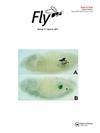Toll样受体在组织形态发生和稳态中的细胞力学和细胞-细胞识别控制
IF 2.2
4区 生物学
Q3 BIOCHEMISTRY & MOLECULAR BIOLOGY
引用次数: 5
摘要
Toll样受体(TLRs)的信号转导在后生动物的先天免疫中是保守的和必要的。TLR家族的创始成员Drosophila Toll-1最初因其在早期胚胎发生中的背心轴形成中的作用而被鉴定。果蝇基因组编码9个TLR,这些TLR在发育过程中表现出动态表达模式,表明它们参与组织形态发生和稳态。TLRs在背腔模式之外的发育功能的最新进展不仅揭示了它们在各种生物过程中的不同功能,而且揭示了它们直接调节细胞力学和细胞-细胞识别的前所未有的分子机制,而不依赖于涉及靶基因转录调控的经典信号转导途径。在这篇综述中,我介绍并讨论了TLRs在控制上皮组织稳态、组织形态发生和具有不同细胞身份的细胞群体之间的细胞-细胞识别方面的非免疫功能。本文章由计算机程序翻译,如有差异,请以英文原文为准。
Cell mechanics and cell-cell recognition controls by Toll-like receptors in tissue morphogenesis and homeostasis
ABSTRACT Signal transduction by the Toll-like receptors (TLRs) is conserved and essential for innate immunity in metazoans. The founding member of the TLR family, Drosophila Toll-1, was initially identified for its role in dorsoventral axis formation in early embryogenesis. The Drosophila genome encodes nine TLRs that display dynamic expression patterns during development, suggesting their involvement in tissue morphogenesis and homeostasis. Recent progress on the developmental functions of TLRs beyond dorsoventral patterning has revealed not only their diverse functions in various biological processes, but also unprecedented molecular mechanisms in directly regulating cell mechanics and cell-cell recognition independent of the canonical signal transduction pathway involving transcriptional regulation of target genes. In this review, I feature and discuss the non-immune functions of TLRs in the control of epithelial tissue homeostasis, tissue morphogenesis, and cell-cell recognition between cell populations with different cell identities.
求助全文
通过发布文献求助,成功后即可免费获取论文全文。
去求助
来源期刊

Fly
生物-生化与分子生物学
CiteScore
2.90
自引率
0.00%
发文量
17
审稿时长
>12 weeks
期刊介绍:
Fly is the first international peer-reviewed journal to focus on Drosophila research. Fly covers a broad range of biological sub-disciplines, ranging from developmental biology and organogenesis to sensory neurobiology, circadian rhythm and learning and memory, to sex determination, evolutionary biology and speciation. We strive to become the “to go” resource for every researcher working with Drosophila by providing a forum where the specific interests of the Drosophila community can be discussed. With the advance of molecular technologies that enable researchers to manipulate genes and their functions in many other organisms, Fly is now also publishing papers that use other insect model systems used to investigate important biological questions.
Fly offers a variety of papers, including Original Research Articles, Methods and Technical Advances, Brief Communications, Reviews and Meeting Reports. In addition, Fly also features two unconventional types of contributions, Counterpoints and Extra View articles. Counterpoints are opinion pieces that critically discuss controversial papers questioning current paradigms, whether justified or not. Extra View articles, which generally are solicited by Fly editors, provide authors of important forthcoming papers published elsewhere an opportunity to expand on their original findings and discuss the broader impact of their discovery. Extra View authors are strongly encouraged to complement their published observations with additional data not included in the original paper or acquired subsequently.
 求助内容:
求助内容: 应助结果提醒方式:
应助结果提醒方式:


